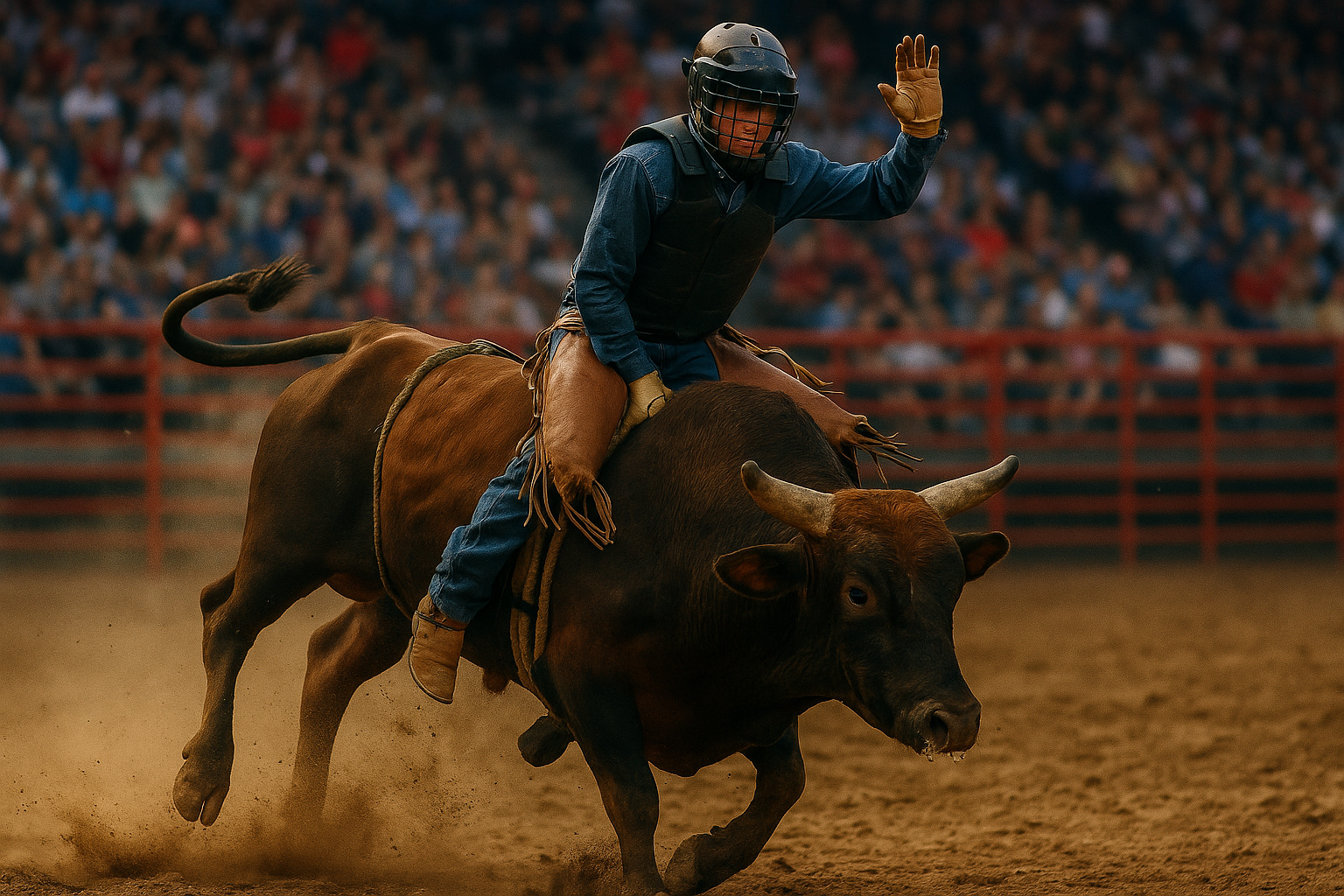
The Ride They Don’t Show You
Eight seconds. That’s the magic number fans chant, the one that fills arenas. But behind the noise and lights, bull riding isn’t just about holding on. It’s about stepping into a chute with a 1,600-pound animal bred to throw you down, and knowing the risks are real.
As someone who rides bulls myself, I know this isn’t just theory. Every rider makes peace with the fact that injuries aren’t a matter of if but when. What audiences rarely see is what happens afterward: the bruises, the concussions, the medical bills. For every champion draped in buckles and sponsorship logos, there are dozens of riders nursing injuries on the road between small-town rodeos.
This isn’t the cowboy myth. It’s the reality.
1. Injuries: The Everyday Reality
Bull riding accounts for up to 58% of all rodeo injuries. Fatalities are extremely rare and usually freak accidents. What’s far more common are the everyday injuries: pulled muscles, torn ligaments, broken bones, and concussions.
Just last month in Panguitch, Utah, a friend of mine TJ came off a bull without a helmet and took a horn to the face. He left with a concussion, swelling, bruising, and a black eye. Not a career-ender, but a clear reminder of how quickly things can turn painful.
For most riders, the story isn’t about catastrophic accidents. It’s the steady accumulation of sprains, tears, and head injuries that define their careers.
2. The Money Myth
Bull riding looks like a fast track to riches, but that’s rarely true. Superstars like J.B. Mauney or José Vitor Leme have earned millions. Most riders, however, make far less.
The 50th-ranked rider in Professional Bull Riders (PBR) might earn around $20,000 in a season, before travel, entry fees, gear, and medical costs. For many, that means riding is more financial gamble than payday.
3. Training and the Cowboy Code
There’s no single path into bull riding. Some start as kids in youth rodeos, others learn on ranches or attend bull riding schools. Training often emphasizes balance, core strength, and flexibility, but tradition and toughness shape the mindset just as much.
Helmets are more common now, but resistance remains. Many riders still view extra protection as a sign of weakness. The result is higher risks of concussions and long-term wear and tear.
4. Bulls and Ethics
Critics see bull riding as exploitation. Supporters argue bulls are valuable athletes with veterinary care, strict breeding, and scoring systems that reward strong performance.
Prize bulls can be worth tens of thousands of dollars, and their safety matters to stock contractors. Still, debates about animal welfare persist, reflecting broader cultural shifts in how people view entertainment and tradition.
5. Rodeo Myths and Media
Movies, TV, and highlight reels often glamorize the sport, showing only perfect rides or dramatic saves. What they leave out are the long road trips, the quiet injuries, and the reality that most riders will never make it big.
For fans, it looks like eight seconds of courage. For riders, it’s years of discipline, pain, and resilience behind the scenes.
6. Beyond the Arena: What We Should Remember
Bull riding isn’t just a sport. It’s culture, livelihood, and tradition. For some, it’s a path to championships. For most, it’s a grind marked by modest earnings and constant injuries.
Fatal accidents are rare. But concussions, tears, and bruises like the ones TJ suffered in Utah are reminders that risk is always present. The true story of bull riding isn’t found in freak tragedies. It’s in the daily endurance of those who climb in the chute despite knowing the cost.
For me, and for riders like TJ, the decision to ride isn’t about money or fame. It’s about the challenge, the tradition, and testing yourself against something bigger than you. And for those watching, the least we can ask is that you see past the spectacle and respect the reality behind the ride.

